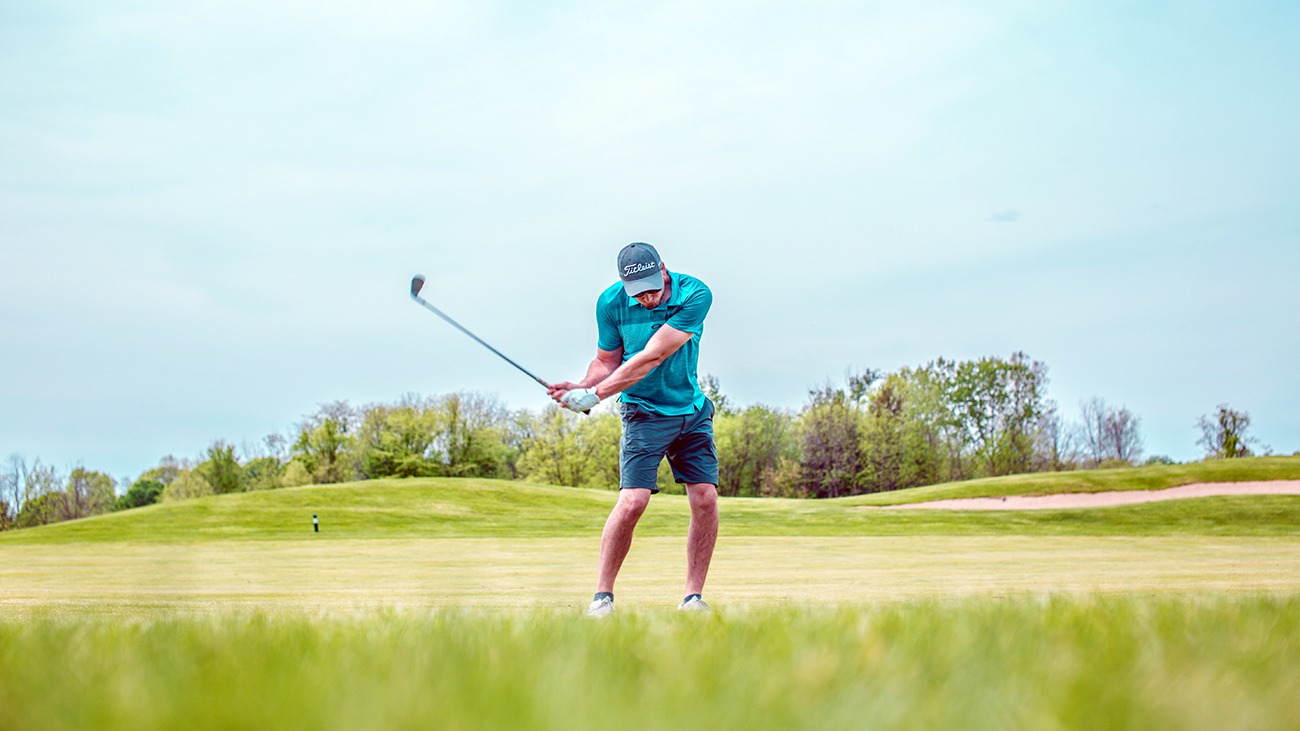Getting that awesome backspin on a golf ball is no mean feat. As with most shots, the pros make it look effortless, but for an amateur golfer; deliberate practice is required.
You’re unlikely to get anywhere in a hurry without first understanding a few fundamental basics of to transfer spin to the ball and how to practice appropriately.
How is spin generated on a golf ball?
Backspin occurs when the impact of the club face against the ball causes it to rotate backwards before it takes off. The grooves of the club’s face grip to the ball as you strike through it and spin the ball.
The more lofted your club’s face, the more spin you’ll see imparted on to the golf ball.
With the right technique and a little determination, you’ll be seeing that familiar drop and stop sooner than you imagine. Here are some helpful tips on how to spin a golf ball.
Use a quality soft-covered golf ball
Soft covered golf balls allow for a greater surface area to come in contact with the club as you strike. This additional contact allows the grooves of the club’s face to transfer more spin to the ball.
Harder, cheaper golf balls are difficult to spin because they spend less time in contact with the club’s face. They’re typically on their way up the fairway before the grooves have had a chance to impart any spin on the ball.
Use a lofted club with fresh grooves

The grooves of the club’s face are what impart spin on the ball. Make sure there is no grass or other debris in the grooves and that the club face is relatively dry before setting up.
The more lofted the club, the more spin you can expect on the golf ball. Open up the face of the club to ensure you get maximum surface area contact between the grooves and the ball.
Strike from a good neat line
To impart maximum spin on a golf ball, you need as much direct contact as possible. Any obstacles between the golf club’s face and the ball will severely hamper your chances of seeing that perfect drop and stop.
Most amateurs will attack downwards when attempting to create spin, striking the turf before the ball. Not only does this put grass between the clubface and the ball, but it also dampens the club face and reduces friction.
A slope that makes your club more likely to clip the grass before the ball is no good. Shouts out of the rough will never spin as well as those on the fairway. An excellent neat lie is one of the essential elements of nailing that perfect spin.
Avoid wet ground and early mornings

If your club face is wet, the ball will slide slightly upwards on the clubface upon impact. This slight sliding motion reduces the amount of friction between the ball and the club face, resulting in far less spin imparted on the ball.
In the morning, the grass is often dewy and causes this exact situation. If you’ve been practicing in the mornings, considering holding out until the early afternoon before trying to perfect these shots.
Opt for a high swing speed
Speed and spin go hand in hand. Golfers with a high swing speed often see issues that arise from putting too much spin on the ball.
Slower swings will have trouble holding the green since the speed at which the clubface makes contact with the ball greatly magnifies the amount of spin imparted.
Conclusion
To nail those tricky spin shots, you should be attempting from a near perfect lie, using a soft covered high-quality golf ball, and a clean clubface with fresh grooves.
Avoid early mornings, and avoid the common mistake of attacking downwards.
Place around 60-to-65% of your weight on your front foot, and begin moving your hands upwards and in towards your body as they pass your right thigh. You’ve got this.
